#clearwings
Explore tagged Tumblr posts
Text
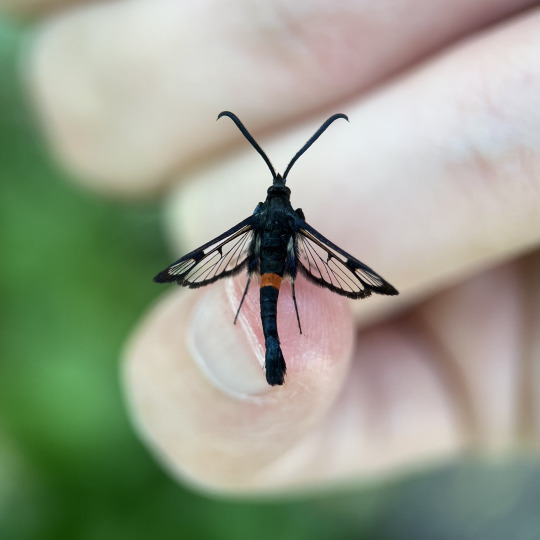
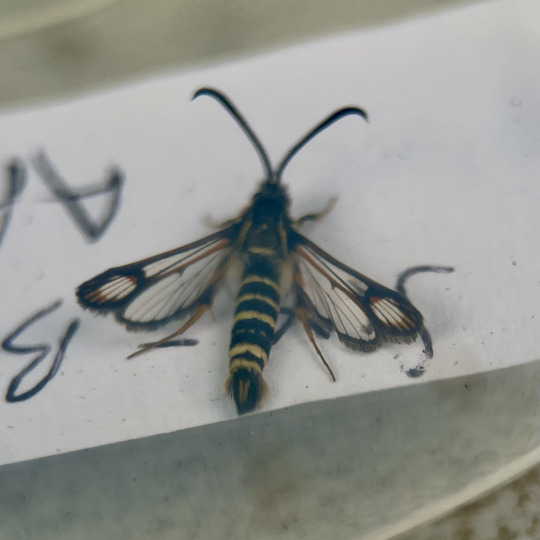
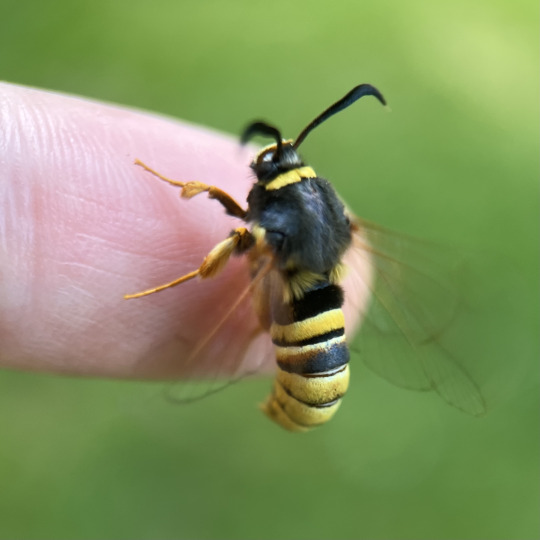
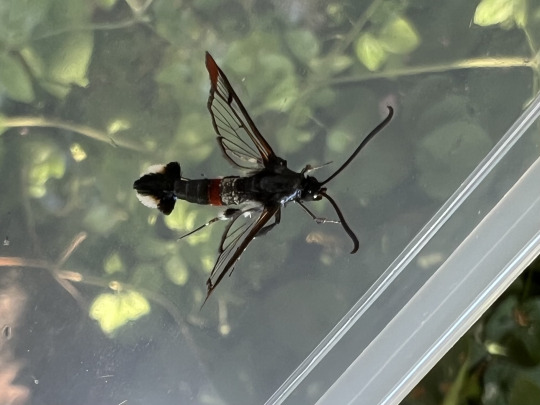
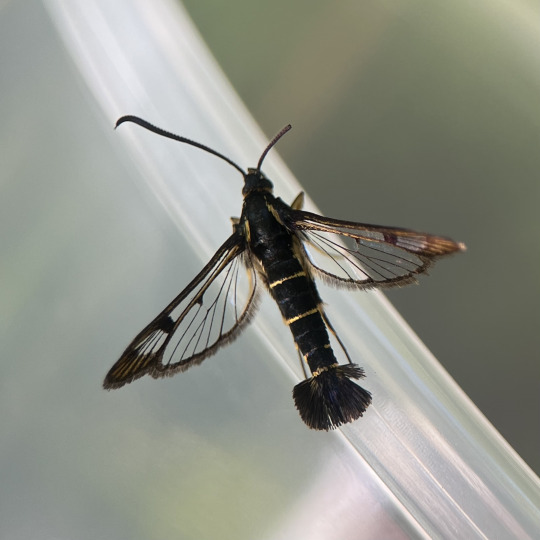
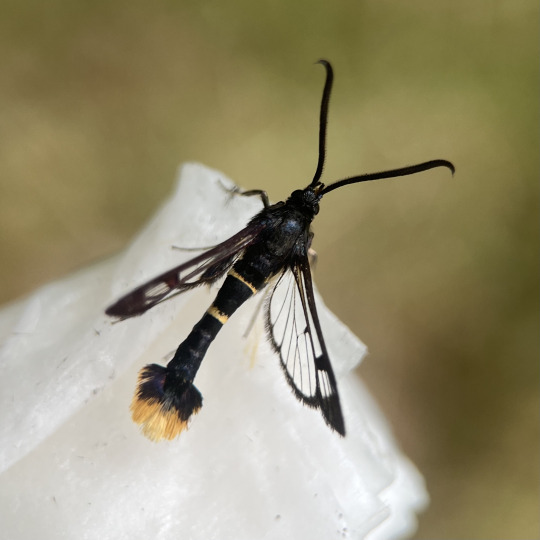
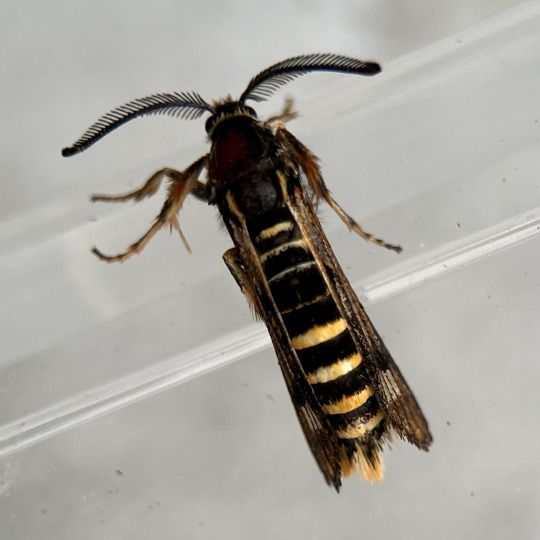
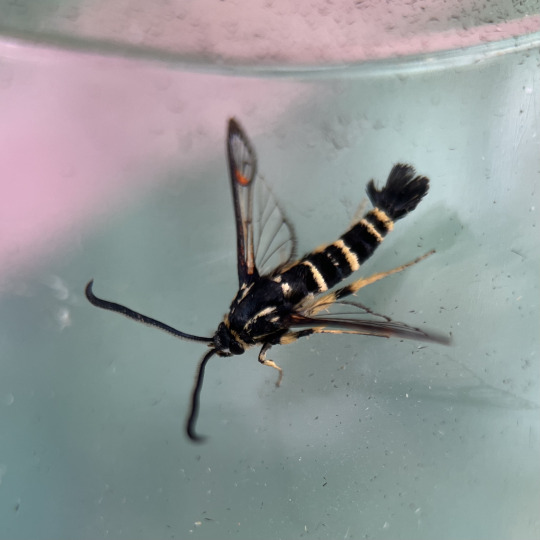
The eight species of clearwing moth I’ve recorded in my garden this year, all attracted to pheromone lures.
Red-belted Clearwing, Six-belted Clearwing, Lunar Hornet Moth, Red-tipped Clearwing, Currant Clearwing, Orange-tailed Clearwing, Raspberry Clearwing, Yellow-legged Clearwing.
12 notes
·
View notes
Text
String identified: ag t t a a tt caact gt a t
Closest match: Napeogenes inachia genome assembly, chromosome: 10 Common name: Inachia Clearwing

(image source)
hold on babygirl dont die there will be a new freaky little character for you get insanely obsessed with
#tumblr genetics#genetics#biology#science#bugs#wordfather#insects#butterflies#clearwing#clearwings#inachia clearwing#CLEARWING 🎉🎉🎉🎉🎉🎉🎉🎉🎉🎉#very convenient result for this post. i AM obsessed with clearwings.
37K notes
·
View notes
Text
Yellowjacket-Mimicking Moth: this is just a harmless moth that mimics the appearance and behavior of a yellowjacket/wasp; its disguise is so convincing that it can even fool actual wasps

This species (Myrmecopsis polistes) may be one of the most impressive wasp-mimics in the world. The moth's narrow waist, teardrop-shaped abdomen, black-and-yellow patterning, transparent wings, smooth appearance, and folded wing position all mimic the features of a wasp. Unlike an actual wasp, however, it does not have any mandibles or biting/chewing mouthparts, because it's equipped with a proboscis instead, and it has noticeably "feathery" antennae.
There are many moths that use hymenopteran mimicry (the mimicry of bees, wasps, yellowjackets, hornets, and/or bumblebees, in particular) as a way to deter predators, and those mimics are often incredibly convincing. Myrmecopsis polistes is one of the best examples, but there are several other moths that have also mastered this form of mimicry.

Above: Pseudosphex laticincta, another moth species that mimics a yellowjacket
These disguises often involve more than just a physical resemblance; in many cases, the moths also engage in behavioral and/or acoustic mimicry, meaning that they can mimic the sounds and behaviors of their hymenopteran models. In some cases, the resemblance is so convincing that it even fools actual wasps/yellowjackets.

Above: Pseudosphex laticincta
Such a detailed and intricate disguise is unusual even among mimics. Researchers believe that it developed partly as a way for the moth to trick actual wasps into treating it like one of their own. Wasps frequently prey upon moths, but they are innately non-aggressive toward their own fellow nest-mates, which are identified by sight -- so if the moth can convincingly impersonate one of those nest-mates, then it can avoid being eaten by wasps.

Above: Pseudosphex laticincta
I gave an overview of the moths that mimic bees, wasps, yellowjackets, hornets, and bumblebees in one of my previous posts, but I felt that these two species (Myrmecopsis polistes and Pseudosphex laticincta) deserved to have their own dedicated post, because these are two of the most convincing mimics I have ever seen.

Above: Pseudosphex sp.
I think that moths in general are probably the most talented mimics in the natural world. They have so many intricate, unique disguises, and they often combine visual, behavioral, and acoustic forms of mimicry in order to produce an uncanny resemblance.
Several of these incredible mimics have already been featured on my blog: moths that mimic jumping spiders, a moth that mimics a broken birch twig, a moth caterpillar that can mimic a snake, a moth that disguises itself as two flies feeding on a pile of bird droppings, a moth that mimics a dried-up leaf, a moth that can mimic a cuckoo bee, and a moth that mimics the leaves of a poplar tree.
Moths are just so much more interesting than people generally realize.
Sources & More Info:
Journal of Ecology and Evolution: A Hypothesis to Explain Accuracy of Wasp Resemblances
Entomology Today: In Enemy Garb: A New Explanation for Wasp Mimicry
iNaturalist: Myrmecopsis polistes and Pseudosphex laticincta
Transactions of the Entomological Society of London: A Few Observations on Mimicry
#entomology#arthropods#lepidoptera#yellowjacket-mimicking moth#wasp-moth#clearwing moths#animal camouflage#myrmecopsis polistes#pseudosphex laticincta#pseudosphex aequalis#moths#insects#bugs#mimicry#evolution#hymenopteran mimics#defense mechanisms#animal facts#wasps#yellowjackets#mimicry among moths#moths are amazing#and wildly underrated
12K notes
·
View notes
Text
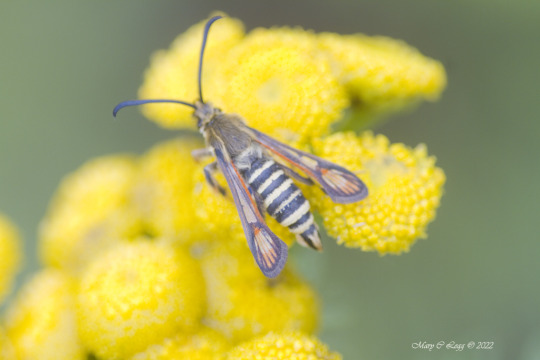
Six-belted Clearwing, Bembecia ichneumoniformis Canon 7D EF 1002.8 f/2.8 1/250 iso:500 Milovice, Czech Republic 7/24/2016
0 notes
Text

Blushing Phantom aka Rusted Clearwing-Satyr (Cithaerias pireta), family Nymphalidae, Costa Rica
photograph by Victor Chow
#clearwing#satyr#phantom#butterfly#cithaerias#nymphalidae#lepidoptera#insect#entomology#animals#nature#central america
2K notes
·
View notes
Text
String identified: ctatt/cgtc: “acca” “/attt” “t,” “aaagt” “tattt’ttgtagtact” “caat”
Closest match: Dircenna loreta genome assembly, chromosome: 1

(image source)
some of my current favorite responses to weird/confusing sentences:
“many such cases”
“we love/hate to see it”
“honestly, work”
“many are saying this”
“love them or hate them they’re spitting straight facts”
“you conjure a beautiful world”
#tumblr genetics#genetics#biology#science#millenianthemums#tumblr#bugs#insects#butterflies#clearwings#clearwing butterfly#dircenna loreta#CLEARWINGS!!! I LOVE YOU CLEARWINGS!!!!!!!#in case you're wondering how a butterfly's wings can be clear#it's actually very simple!#butterflies' wings are colored by tiny tiny scales#and clearwings are simply lacking these scales in certain patterns!#you can probably imagine that this clear effect is beneficial in avoiding predators like birds#but it also has a disadvantage in that finding a mate is a lot harder when you're so camouflaged!#so to offset this#clearwing butterflies sometimes have darker patterns on the tops of their wings so birds cant see them#while having brighter patterns (usually oranges) on the underside of their wings to help with finding mates!#pteronymia butterflies are a great example of this in clearwings!
12K notes
·
View notes
Photo
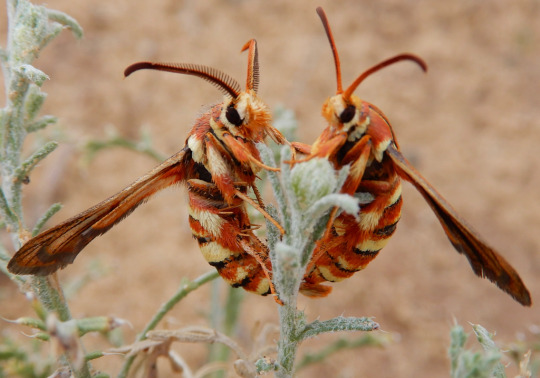
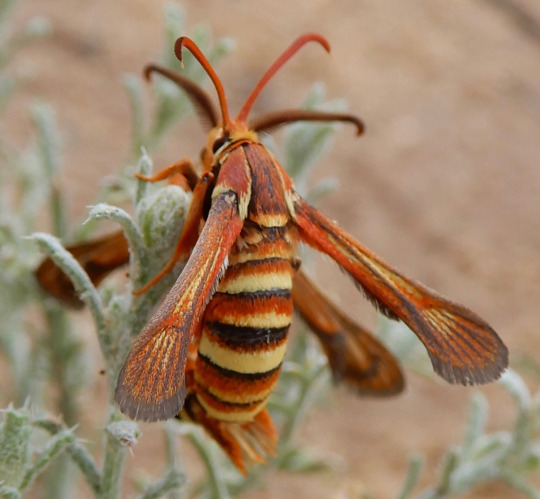


Wasp-mimic clearwing moth, Euhagena emphytiformis, Sesiidae
Found in the United States
Photo 1 by ellen5
#animals#curators on tumblr#insects#bugs#moth#clearwing moth#wasp mimic clearwing moth#mimicry#one nice bug
12K notes
·
View notes
Text
A Hummingbird clearwing! (Hemaris thysbe)
8K notes
·
View notes
Text

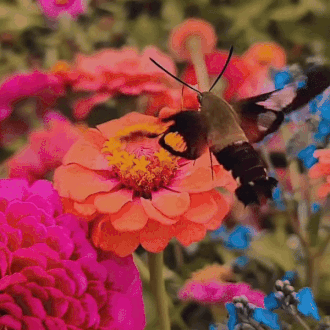

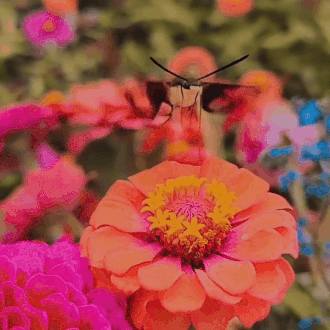
hummingbird clearwing moth (hemaris thysbe) | moanrchmanorfl on ig
#stim#moths#nature#bugs#sfw#pink#orange#brown#black#blue#insects#i believe this is a hummingbird clearwing moth but i'm not 100% sure so plz let me know if i'm wrong#animals#flowers#plants#hummingbird clearwing moth#hemaris thysbe#wings#ishy gifs#postish
4K notes
·
View notes
Text
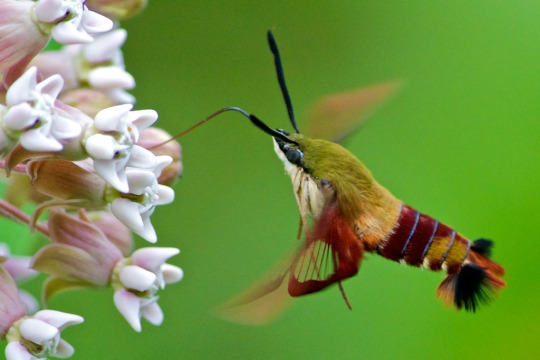
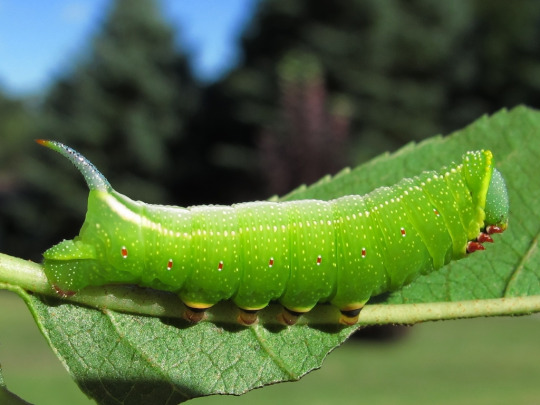
This animal was requested!
#north american wildlife#north american bugs#hummingbird clearwing moth#hummingbird clearwing#moth#moths#insecta#insect#insects#bug#bugs#lepidoptera#sphingidae#animal polls#poll blog#my polls#animals#polls#tumblr polls#migratory insects
980 notes
·
View notes
Note
Behold! I, in my boredom and neurodivergence, have taken the organism archive (Faithfully updated by me) and converted it into a very messy genome!
6 pages of A, C, G and T! What could result when BLASTing this?
String identified: (all that)
Closest match: Napeogenes sylphis genome assembly, chromosome: 12 Common name: Clearwing Butterfly
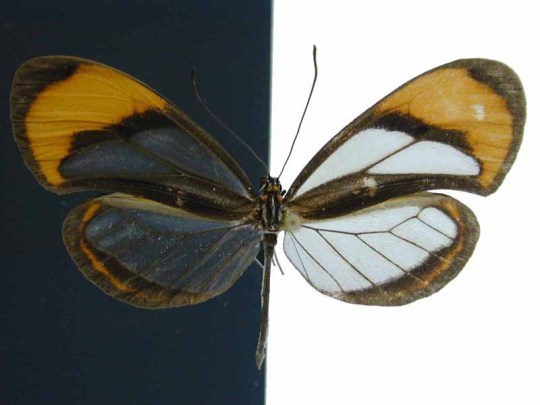
(image source)
#tumblr genetics#genetics#biology#science#asks#requests#sent to me#i-am-the-plagu3#hellsitegenetics#bugs#insects#butterflies#clearwing butterfly#love this image. dark mode vs. light mode#always good to have you btw :D thank you for keeping the archive updated#good to know the One True hellsitegenetics organism is a lepidopteran. as the moths would have it
519 notes
·
View notes
Text
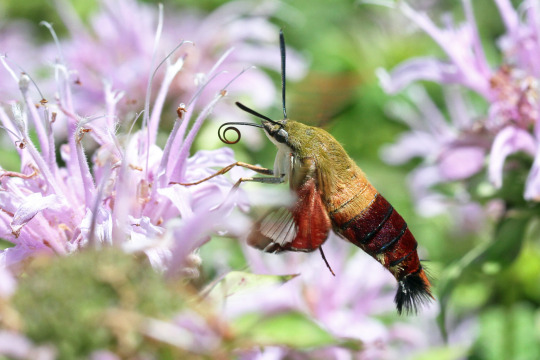
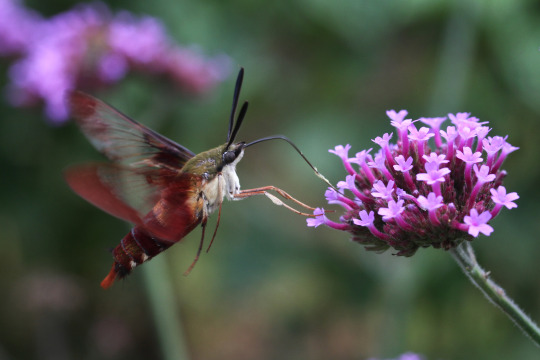

Fond of pink
Hummingbird Clearwing moths (Hemaris thysbe)
Midsummer 2023
Southeastern Pennsylvania
#moth#moths#photographers on tumblr#Hemaris thysbe#hummingbird moth#hummingbird clearwing#bugs#bug#bugblr#entomology#insects#insect#lepidoptera#nature#animals#pink
3K notes
·
View notes
Text

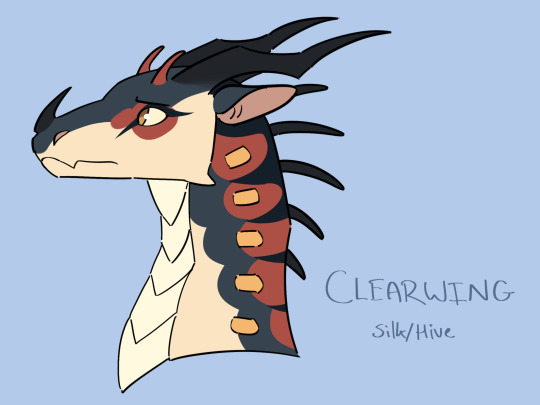
SALAD
594 notes
·
View notes
Text

The Coffee Clearwing was prompt 5 of #marchmothmadness created by @tinykatecreates and @suefield66
90 notes
·
View notes
Text
The Oriental Blue Clearwing Moth: these moths were regarded as a "lost species" for more than 130 years, until they were finally sighted again in 2013
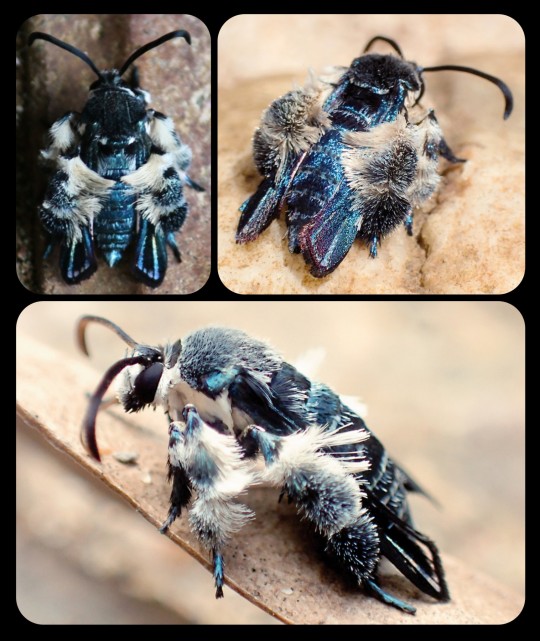
For more than 130 years, the Oriental blue clearwing moth (Heterosphecia tawonoides) was known only from a single, badly damaged specimen that was collected in Sumatra in 1887. There were no recorded sightings of this species again until 2013, when entomologist Dr. Marta Skowron Volponi unexpectedly found the moths feeding on salt deposits that had accumulated along the riverbanks in Malaysia's lowland rainforest.
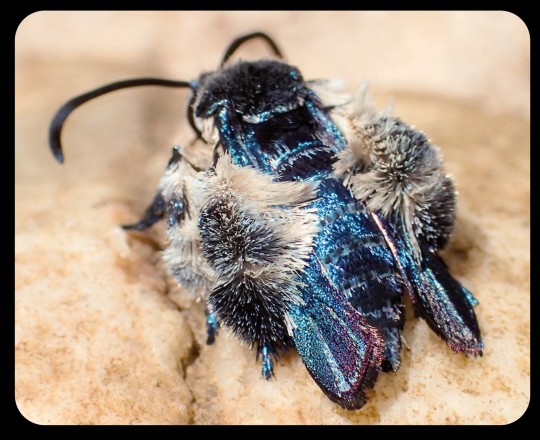
These moths were observed by researchers again in 2016 and 2017, and research indicates that the moths are actually bee-mimics, as they mimic the appearance, sound, behavior, and flight patterns of local bees. Their fuzzy, bright blue appearance might seem a little out of place for a bee-mimic, but those features do appear in several different bee species throughout Southeast Asia.
When the moths are in flight, they bear a particularly strong resemblance to the bees of the genus Thyreus (i.e. cuckoo bees, otherwise known as cloak-and-dagger bees), several of which are also bright blue, with banded markings, dark blue wings, fuzzy legs, and smooth, rounded antennae. The physical resemblance is compounded by the acoustic and behavioral mimicry that occurs when the moths are in flight.
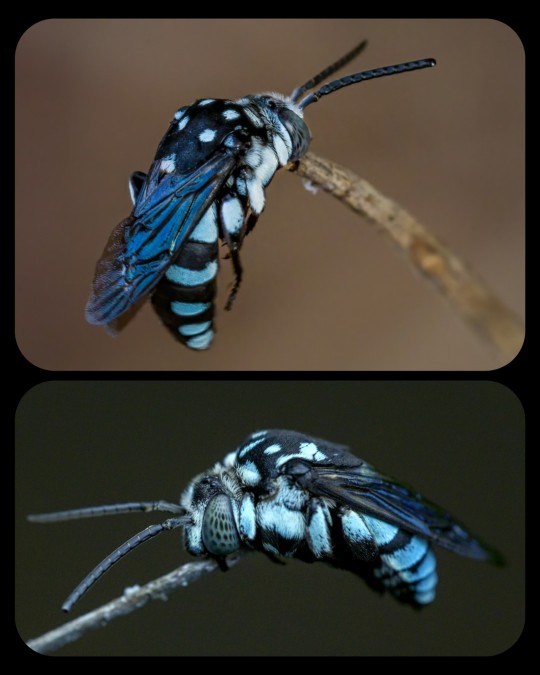
Cloak-and-Dagger Bees: the image at the top shows an Indo-Malayan cloak-and-dagger bee (Thyreus novaehollandiae) in a sleeping position, holding itself upright with its mandibles clamped onto a twig, while the image at the bottom shows a Himalayan cloak-and-dagger bee (T. himalayensis) resting in the same position
The moths also engage in "mud-puddling" among the various bees that congregate along the riverbanks; mud-puddling is the process whereby an insect (usually a bee or a butterfly) draws nutrients from the fluids found in puddles, wet sand, decaying plant matter, carrion, animal waste, sweat, tears, and/or blood. According to researchers, the Oriental blue clearwing moth was the only lepidopteran that was seen mud-puddling among the local bees.
Dr. Skowron Volponi commented on the unusual appearance and behavior of these moths:
You think about moths and you envision a grey, hairy insect that is attracted to light. But this species is dramatically different—it is beautiful, shiny blue in sunlight and it comes out during the day; and it is a master of disguise, mimicking bees on multiple levels and even hanging out with them. The Oriental blue clearwing is just two centimeters in size, but there are so many fascinating things about them and so much more we hope to learn.
This species is still incredibly vulnerable, as it faces threats like deforestation, pollution, and climate change. The president of Global Wildlife Conservation, which is an organization that seeks to rediscover "lost species," added:
After learning about this incredible rediscovery, we hope that tourists visiting Taman Negara National Park and picnicking on the riverbanks—the home of these beautiful clearwing moths—will remember to tread lightly and to take their trash out of the park with them. We also recommend that Americans learn about palm oil production, which is one of the primary causes of deforestation in Malaysia.
Sources & More Info:
Phys.org: Bee-Mimicking Clearwing Moth Buzzes Back to Life After 130 Years
Mongabay News: Moth Rediscovered in Malaysia Mimics Appearance and Behavior of Bees to Escape Predators
Journal of Tropical Conservation Science: Lost Species of Bee-Mimicking Clearwing Moth, H. tawonoides, Rediscovered in Peninsular Malaysia's Primary Rainforest
Frontiers in Zoology: Southeast Asian Clearwing Moths Buzz like their Model Bees
Royal Society Publishing: Moving like a Model - mimicry of hymenopteran flight trajectories by clearwing moths of Southeast Asian rainforests
Medium: Rediscovery in a Glint of Blue
re:wild.org: The "Search for Lost Species" Project
#lepidoptera#moths#heterosphecia tawonoides#oriental blue clearwing moth#entomology#insects#cute bugs#nature#animals#lost species#mimicry#evolution#bees#southeast asia#Malaysia#colorful moths#bee mimic#science#mimicry among moths#arthropods
1K notes
·
View notes
Text
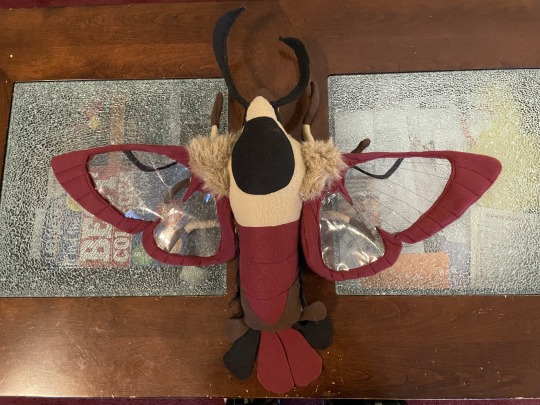



GUYS, Look at my Fucking MOTH
Decided to be self indulgent this spring break and have spent the last 4 days working on a Hummingbird Clearwing Moth because they are my favorite animal
this guy has 80 individual pieces of fabric cut and sewn together and is a pretty good size, they’re made out of fleece, fake fur, and a little bit of vinyl for the wings
the pattern is of my own design, but if you guys want to see it I can try and take some photos of it (it was drawn on printer paper)
91 notes
·
View notes